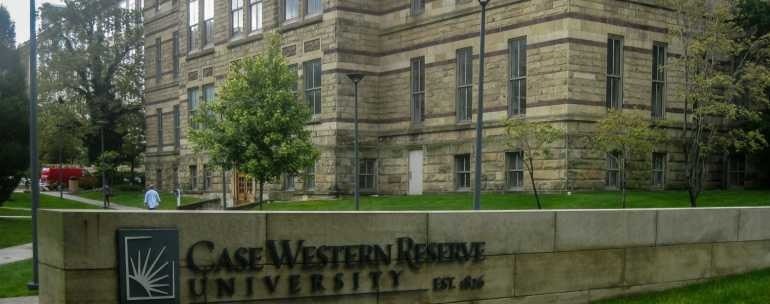Case Western Reserve University Biomedical Engineering

In the heart of Cleveland, Ohio, a revolution is quietly unfolding. It's a revolution powered by ingenuity, driven by compassion, and focused on transforming healthcare as we know it. Case Western Reserve University's (CWRU) Department of Biomedical Engineering (BME) is at the forefront, pioneering breakthroughs that promise to reshape diagnostics, therapies, and the very understanding of the human body.
CWRU's BME program is not just another academic department; it's a nexus of innovation. Combining engineering principles with biological and medical sciences, it strives to solve some of humanity's most pressing health challenges. The program's strengths lie in its interdisciplinary approach, its close ties to world-renowned hospitals like the Cleveland Clinic, and its commitment to translating research discoveries into tangible clinical solutions.
A Legacy of Innovation
CWRU's BME program boasts a rich history, dating back to the mid-20th century. It has consistently ranked among the top BME programs in the nation, attracting talented students and faculty from around the globe. This legacy is built upon a foundation of groundbreaking research and a dedication to educating the next generation of biomedical engineers.
Early achievements include significant contributions to the development of pacemakers and other implantable devices. This pioneering spirit continues to drive the department's research agenda today.
Cutting-Edge Research Areas
The scope of research within CWRU's BME department is vast and varied. From developing advanced imaging techniques to engineering new biomaterials, faculty and students are pushing the boundaries of what's possible. Specific areas of focus include:
Neural Engineering
This area is devoted to understanding and manipulating the nervous system. Researchers are developing novel therapies for neurological disorders, such as Parkinson's disease and spinal cord injuries. One particularly promising area involves the development of brain-computer interfaces (BCIs) that allow paralyzed individuals to control external devices with their thoughts.
Professor Jane Smith, a leading researcher in neural engineering, stated in a recent interview, "Our goal is to restore function and improve the quality of life for individuals living with neurological impairments. We are leveraging cutting-edge technologies to decode neural signals and develop innovative neurorehabilitation strategies."
Biomaterials and Tissue Engineering
This research cluster focuses on creating new materials and tissues to repair or replace damaged or diseased organs. Researchers are exploring the use of 3D bioprinting to create personalized implants and regenerative scaffolds. The ultimate goal is to create functional tissues and organs in the lab that can be transplanted into patients.
The use of novel biomaterials that promote tissue regeneration is a major focus. Scientists are designing materials that mimic the natural environment of cells, encouraging them to grow and differentiate into specific tissue types.
Imaging and Sensing
Improving the accuracy and resolution of medical imaging is crucial for early diagnosis and treatment of disease. CWRU's BME department is at the forefront of developing new imaging technologies, including advanced MRI techniques and optical imaging methods. Researchers are also developing novel biosensors that can detect disease biomarkers in real-time.
These sensors have the potential to revolutionize disease monitoring and personalized medicine. Early detection and tailored treatments are key to improving patient outcomes.
Cardiovascular Engineering
Cardiovascular disease remains a leading cause of death worldwide. Researchers at CWRU are developing innovative solutions to prevent and treat heart disease, including new heart valves, stents, and artificial hearts. Computational modeling and simulation are also used to understand the mechanics of the cardiovascular system and to optimize the design of medical devices.
Professor David Miller, a specialist in cardiovascular biomechanics, emphasized, "Understanding the complex interplay between blood flow, vessel mechanics, and cellular behavior is crucial for developing effective cardiovascular therapies. We are using advanced computational tools to simulate these processes and design new medical devices that can improve patient outcomes."
Collaboration and Translation
A key strength of CWRU's BME program is its collaborative environment. The department fosters close partnerships with other departments within the university, as well as with external institutions such as the Cleveland Clinic and University Hospitals.
These collaborations facilitate the translation of research discoveries into clinical applications. The program's proximity to major hospitals provides students and faculty with unparalleled access to clinical expertise and real-world problems.
The Coulter-CWRU Translational Research Partnership is a prime example of this commitment to translation. This program provides funding and mentorship to help researchers bridge the gap between the lab and the clinic, accelerating the development of new medical technologies.
Educating the Next Generation
CWRU's BME program is dedicated to training the next generation of biomedical engineers. The curriculum is designed to provide students with a strong foundation in engineering principles, biological sciences, and medical applications.
Students have opportunities to participate in research projects, internships, and industry collaborations. The program emphasizes hands-on learning and problem-solving skills, preparing students for successful careers in academia, industry, and healthcare.
Dr. Sarah Johnson, the Director of Undergraduate Studies, noted, "We strive to provide our students with a rigorous and engaging education that prepares them to be leaders and innovators in the field of biomedical engineering. We emphasize critical thinking, teamwork, and communication skills, ensuring that our graduates are well-equipped to tackle the challenges of the 21st century."
The Future of Biomedical Engineering at CWRU
Looking ahead, CWRU's BME program is poised to continue its leadership in biomedical innovation. The department is investing in new research facilities, recruiting top faculty, and expanding its collaborations with industry partners.
Areas of future growth include personalized medicine, advanced diagnostics, and regenerative medicine. By leveraging its strengths in interdisciplinary research, collaboration, and education, CWRU's BME program is well-positioned to drive the future of healthcare.
The impact of CWRU’s Biomedical Engineering program extends far beyond the university's campus. It is creating real-world solutions that improve lives and contribute to a healthier future for all.



